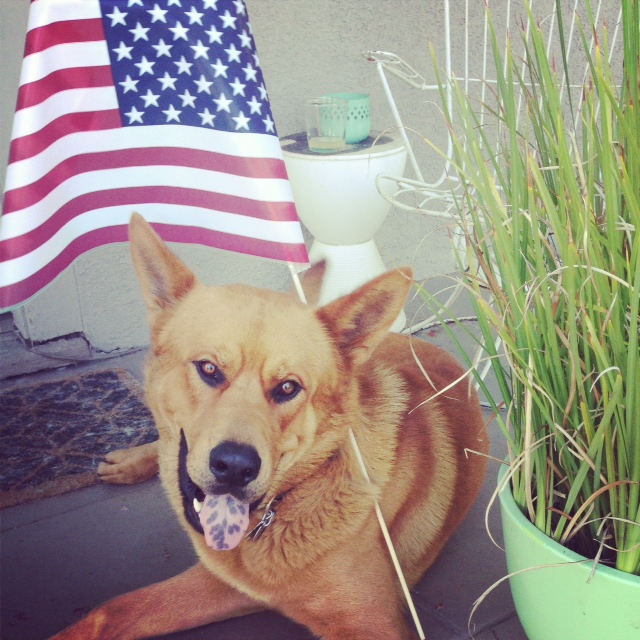By Nancy Kay, DVM, DACVIM
If you’ve lived your life with dogs, chances are you’ve cared for one with a bladder infection. The normal urinary bladder is sterile, meaning devoid of bacteria. Infection occurs when bacteria find their way into the bladder and set up housekeeping. Bacterial cystitis (medical-speak for a bladder infection) is a common diagnosis in the canine world. The term urinary tract infection (UTI) is often used synonymously with bacterial cystitis. Technically speaking, a UTI can mean infection anywhere within the urinary tract, and is not specific to the bladder.
Bacterial cystitis occurs most commonly in female dogs. This is attributed to the fact that, compared to males, female dogs have a shorter urethra, the conduit through which urine flows from the bladder to the outside world. With only a short distance to travel in female dogs, bacteria have an easier time migrating from the skin surface up into the urinary bladder.
There is no breed predisposition for bladder infections. However, small-breed dogs are more susceptible to some of the underlying causes of infection described below.
Causes of Infection
While not always easy or even possible to diagnose, there are several underlying issues that make it easier for bacteria to colonize and thrive within the urinary bladder. Anything that disrupts the normal architecture of the urinary tract or reproductive tract (the two are anatomically connected) predisposes to infection. Examples include:
Stones within the urinary tract
Tumors or polyps within the urinary or reproductive tracts
Foreign body within the urinary or reproductive tracts
Anatomical birth defects within the urinary or reproductive tracts
Prostate-gland or testicular disease
Vaginal, vulvar, or uterine disease
Urine that is less concentrated (more dilute) than normal creates an environment that is bacteria-friendly. So, it’s not unusual for bacterial cystitis to accompany diseases associated with increased thirst and increased urine volume, such as kidney failure, liver disease, and some hormonal imbalances. Bladder infections occur commonly in dogs with diabetes mellitus, a hormonal imbalance that creates dilute urine. The sugar in the urine of diabetic dogs creates an ideal growth media in which bacterial organisms absolutely thrive.
Suppression of the immune system caused by disease or medication also promotes bladder infections. Prednisone, a commonly prescribed nonsteroidal anti-inflammatory medication (NSAID), causes urine dilution along with immunosuppression. Not surprisingly, about one third of female dogs receiving prednisone develop spontaneous bladder infections.
Symptoms of Infection
If ever you’ve experienced a bladder infection, you know just how miserable the symptoms can be. Dogs vary a great deal in terms of how dramatically they show evidence of a bladder infection. Some exhibit every symptom in the book, while others demonstrate none whatsoever. Additionally, symptoms can arise abruptly or gradually. Every dog reads the textbook a little bit differently!
Symptoms most commonly observed in association with canine bladder infections include:
– Straining to urinate
– Urination in inappropriate places
– Increased frequency of urination
– Blood within the urine
– An unusual odor to the urine
– Urine leakage
– Increased thirst
– Excessive licking at the penis or vulva
It is unusual for plain and simple bladder infections to cause lethargy, loss of appetite, or fever. Such “systemic” symptoms, in conjunction with documentation of bacteria within the urinary bladder, create suspicion for infection elsewhere within the urinary or reproductive tracts (kidneys, prostate gland, uterus).
It’s important to remember that dogs are creatures of habit, and any change in habit is a big red flag beckoning you to take notice. Filling the water bowl more than usual? Is your girl squatting more frequently than normal on her morning walks? Is she waking you up in the middle of the night to go outside to urinate? Has your well-house-trained dog begun urinating in the house? All such symptoms are worthy of medical attention. For your dog’s sake, please don’t blame urinary issues on negative behavior before first ruling out an underlying medical issue.
Collection of Urine Samples for Testing
If a bladder infection is suspected, testing the urine will be one of the first steps your veterinarian takes. There are a few different ways to collect urine from a dog.
A “free-catch” sample involves catching some urine in a container as the dog urinates. The presence of bacteria in a free-catch sample is nonspecific, meaning the bacteria might have originated anywhere en route to the collection container, including the bladder, urethra, vulva, prostate, and even the hair around the opening of the penis or vulva. In other words, bacteria found in a free-catch sample may not be all that meaningful. Other possible downsides to collecting free catch urine samples are a wet hand and suspicious looks from the neighbors.
Urine can also be collected via a plastic or rubber catheter, inserted into the end of the urethra and advanced forward into the urinary bladder. Once in the bladder, the catheter withdraws the urine. There are a few drawbacks to this sampling method: Most dogs experience some discomfort with the process. Additionally, it is tricky business finding the opening to the urethra in female dogs. And because the catheter comes in contact with the urethra and reproductive structures (vagina, penis, prostate gland) before reaching the bladder, one cannot be certain as to the origin of bacteria found in the sample.
The preferred method of urine collection is a technique called cystocentesis. This involves introducing a small needle directly into the urinary bladder. Urine is collected into a syringe attached to the needle. Other than the stress associated with restraint, there is typically no more discomfort for the dog than would be associated with a vaccination. The beauty of a cystocentesis sample is that, if bacteria are detected, one can be certain they were living in the bladder.
Diagnosis of Infection
A bladder infection is definitively diagnosed when bacteria are identified within a urine sample that has been collected via cystocentesis. Supporting evidence of infection includes the presence of red blood cells and excessive white blood cells, and/or protein within the urine. Keep in mind, these ancillary abnormalities can occur with a variety of urinary-tract diseases other than infection.
Bacteria in the urine can be documented by two tests: urinalysis and urine culture. The combination of the two is always ideal.
A urinalysis measures urine concentration and pH, screening for red blood cells, white blood cells, and protein, and viewing the urine sample under the microscope. While this test is relatively reliable, it can produce false negative results, particularly if the urine sample sits for several hours prior to testing (certainly the case when samples are sent to a commercial laboratory rather than tested in house). Over time, the bacteria have a way of disappearing from view. Additionally, if the urine sample is dilute (more water than sludge), small numbers of bacteria can readily be missed during the microscopic evaluation.
The gold-standard method for documentation of bacterial infection is a urine culture. Urine is inoculated onto agar (a sterile growth medium) and incubated for 48 to 72 hours. There, the bacterial growth can be documented, and their identification and sensitivity testing can be performed. These tests clarify the species of bacteria as well as which antibiotics the bugs are sensitive to. This is important information, particularly when treating dogs with recurrent bladder infections.
Managment of First-Time Offenders
For dogs experiencing their first bladder infection, the treatment of choice is a 7 to 14 day course of an antibiotic. Performing a urinalysis and urine culture is ideal, but antibiotic sensitivity testing really isn’t necessary with first timers as it is unlikely that the bacteria will have developed any antibiotic resistance.
The antibiotic chosen should be one that is known to be effective against the most common urinary-tract bacteria. Successful treatment is defined by the resolution of symptoms along with normal urinalysis results and a negative urine culture performed two to three weeks following completion of antibiotic therapy.
Managment of Repeat Offenders
Sometimes, the minute a dog with a bladder infection completes a course of antibiotics, his or her symptoms begin all over again. With these dogs it’s important to do dig deeper, diagnostically, to identify and eliminate the underlying cause of their recurrent infections.
In addition to the urine testing described above, this investigation begins with an extremely thorough physical examination (including a rectal exam) looking for any abnormality that might predispose the dog to bladder infections. In males, these abnormalities include an enlarged prostate gland or an infection within the sheath (pouch surrounding the penis), or in females, an infection in the skin fold covering the vulva.
If the physical exam and urine testing are not revealing, next is blood work (complete blood cell count and chemistry profile). Specific testing to rule out Cushing’s disease (a hormonal imbalance commonly associated with recurrent bladder infections) may be recommended. Abdominal ultrasound comes next. This test allows inspection of the kidneys, prostate gland, and urinary bladder, in search of stones, tumors, polyps, and/or anatomical defects.
Unfortunately, unless they are significantly diseased, ultrasound does not do a good job imaging the “three U’s”: the uterus, the urethra, and the ureters (structures that transport urine from the kidneys to the bladder). Ultrasound creates no discomfort for the dog, so sedation is usually not needed. Clipping the hair over the belly is necessary for good visualization (something the dog could care less about, but the human often objects to).
Buyer beware: the information gleaned from ultrasound is extremely user-dependent. This skill has a steep learning curve, and the more experience the ultrasonographer has, the greater the likelihood the results will be meaningful.
If all of the above testing does not reveal the underlying cause of recurrent infections, the final diagnostic steps are contrast studies (urethrogram, pyelogram) in which dye is used to visualize portions of the urinary tract not seen with ultrasound. These studies are performed using x-rays or computed tomography (CT scan).
Antibiotic Therapy
The ideal way to manage recurrent bladder infections is to define and remove the underlying cause. In some cases, this underlying problem is not definable and/or treatable. When this happens, the judicious use of antibiotic therapy is key to keeping the dog comfortable and preventing issues that can arise secondary to chronic infection (bladder stones, spread of infection to the kidneys or bloodstream).
Choosing the most appropriate antibiotic regimen relies on multiple urine-culture results including bacterial identification and antibiotic-sensitivity testing. Just as in human medicine, some urinary-tract bugs manage to develop a resistance pattern to multiple if not all antibiotics.
Patients with such resistant infections are tricky to manage. They may need big-gun antibiotics (many of which have significant potential side effects) or, if feasible, some “time off” from any antibiotic exposure with hopes that the bacteria will revert back to a more normal pattern of antibiotic sensitivity. If your dog has recurrent bladder infections, anticipate multiple urine cultures over time. Without these results a veterinarian is treating “in the dark,” and this is definitely not in the best interest of the patient.
For dogs with recurrent bladder infections, there are a two ways antibiotic therapy is typically managed:
Long-term, low-dose therapy – An antibiotic is selected based on urine-culture results and the dog is treated at the standard dosage for 14 days. After 14 days, the total daily antibiotic dosage is reduced by 50 to 75 percent and is administered once daily at bedtime. This time of day is chosen because it precedes the longest stretch of urine retention (assuming the dog does not work the graveyard shift).
This regimen will continue for months or even years, following a strict schedule of recheck urine cultures to verify the absence of bacteria. Long-term, low-dose antibiotic therapy is a safe and often effective means to manage recurrent bladder infections.
Pulse therapy – An antibiotic is selected based on urine-culture results and the dog is treated at the standard dosage for 14 days. Just as with the protocol described above, a urine culture is repeated 7 to 10 days after treatment begins to make sure that the antibiotic has successfully eliminated the bacteria. If not, a different antibiotic is chosen and the process begins again.
After 14 days, therapy is discontinued for three weeks, and then pulse therapy is begun. This involves treating the dog with the antibiotic (at the standard dosage) for one week each month. There should be three-week, treatment-free intervals between treatment weeks. Pulse therapy may be continued for months or even years. Periodic urine cultures determine if a change in treatment is needed.
Additional Therapies
Cranberry extracts may help prevent recurrence of some bladder infections. Cranberries contain compounds called proanthocyanidins (PACs) that prevent bacteria from adhering to the inner lining of the bladder wall. If the bugs can’t adhere to the bladder wall they are incapable of colonizing, multiplying, and causing infection. This PAC effect works only against E. coli, the bacteria most commonly cultured from canine bladder infections.
Be aware that not just any cranberry formulation will do. Essential for success is the presence and bioactivity of PACs within the product. If interested in using cranberry extract, be sure to check with your veterinarian for his or her product and dosage recommendation. By the way, the notion that cranberries prevent infection by acidifying the urine is nothing more than an old wives’ tale.
Probiotics may help prevent recurrent bladder infections. This is based on the notion that altering bacterial populations in the gut will alter bacterial populations in the feces. Given that fecal microorganisms that linger on the coat may be the source for some bladder infections, probiotics may (emphasis on “may”) have a beneficial effect. If you decide to try a probiotic, get the most bugs for your buck by purchasing a product with the highest concentration of microorganisms.
Methenamine is a drug that may help prevent bladder infections. It is converted to a dilute formaldehyde product within the bladder, where it acts as an antiseptic. Methenamine is effective only in a very acidic environment (the urine pH must be low). For this reason, it is often administered with a urinary-tract acidifier.
Cleansing the skin area surrounding the vulva two to three times daily provides benefit for some female dogs with recurrent bladder infections. I recommend using baby wipes for this purpose. The hope is that the concentration of normal bacteria hanging out on the skin surface will be lessened, thereby lessening the likelihood of bacterial migration up into the urinary bladder.
If your dog continues to experience recurrent bladder infections despite your family veterinarian’s best efforts, I encourage scheduling a consultation with a veterinarian who specializes in internal medicine. Visit the American College of Veterinary Internal Medicine (ACVIM.org) to find such a specialist in your neck of the woods.
Nancy Kay, DVM, DACVIM, is the author of Speaking for Spot: Be the Advocate Your Dog Needs to Live a Happy, Healthy, Longer Life, and Your Dog’s Best Health: A Dozen Reasonable Things to Expect From Your Vet. She lives in North Carolina. You can read her blog at speakingforspot.com/blog.






